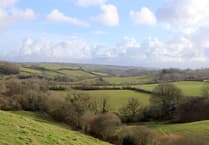THEY’VE got the land – most of it – they’ve got the backing of senior railway officials and they’ve got the plan. Now all that’s needed from the Government is pots of money to get trains back to Tavistock.
For decades, members of the Peninsula Rail Group have lobbied for the return of one of Tavistock’s two stations, lost in the savage nationwide railway cuts of the latter half of last century.
And, after years of disappointment, it looks like it could actually happen.
The Government has already handed out £50,000 to Devon County Council towards a business case for reopening part of the line which ran from Tavistock North to Bere Alston.
The restored track would not reach the former Tavistock North station, whose site is presently occupied by private housing and West Devon Borough Council’s headquarters at Kilworthy Park.
Instead, it would run from Bere Alston, which still has its rail link to Plymouth, to a ‘new’ site on the old trackbed just above Monksmead and below a new housing development at Callington Road.
The Peninsula Rail Group held a ‘where are we now with the reopening?’ meeting for anyone interested in the project at the Bedford Hotel. ‘Anyone interested’ turned out to be a sell-out audience, with group chairman Richard Searight having to source spare chairs from other parts of the building in a heroic, but failed attempt to pack everyone in. Even the standing room was taken up.
The bid to restore Tavistock’s railway – or one of them, as the former GWR route to Plymouth to the south of the town has practically disappeared – is riding high on the back of the outstanding success of a similar scheme in Okehampton.
In November, Okehampton’s rail link reopened after years of hard campaigning by local lobbyists, with trains taking people to Exeter, where they can join the national rail network.
The success of the revamped route, paid for by the Government’s Restoring Your Railway fund, has been spectacular. Passenger usage is around 240 per cent higher than predicted.
Senior officials from GWR, Network Rail, the Devon and Cornwall Rail Partnership and Devon County Council, the main industry players in Okehampton’s success story, are ready to repeat the whole process between Tavistock and Bere Alston.
But instead of billing the line as Tavistock’s rail link with their neighbours, the team have emphasised that the route’s return will offer job and education opportunities for Tavistock people in Plymouth, while city folk get public transport to Dartmoor in return. The new line, they say, would also help regenerate deprived areas in Plymouth such as St Budeaux and Keyham, plus cut carbon emissions on the A386, the traffic-burdened main road route for commuters from Tavistock to the city.
According to Jamie Hulland, the county council’s transport strategy manager, getting the cash for the business case got their plan ‘in the system’ and in front of Department for Transport officials, who have visited the proposal and are said to be very keen on the idea. He said more than 80 per cent of land needed to restore the five-mile route had already been acquired by the council over a period, with the rest being negotiated.
Rail group chairman Mr Searight said one of the most important things in pushing the project forward was local enthusiasm. And town mayor Andy Hutton, who pledged his support, added: ‘I’m going away thinking this could really happen.’




